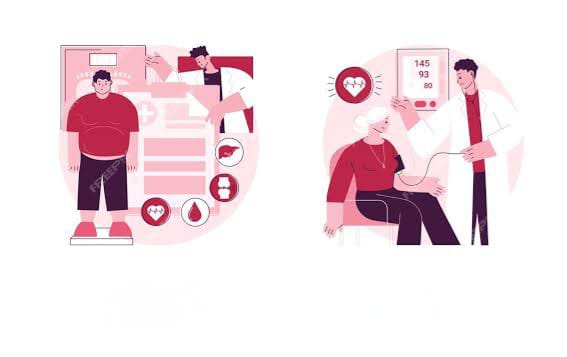Impact of physical Activity on Lifestyle Disorders
Lifestyle diseases are diseases caused by one’s lifestyle. Lifestyle is defined as the way one live. A lifestyle is a combination of mental and physical functioning and is the result of various factors like habits, behaviour, dietary pattern, physical activity and many more. Sedentary lifestyle, stresses, nutritional gaps, improper sleep, alcohol abuse, substance use disorders and tobacco all lead to diseases such as heart disorders, obesity, respiratory disorders, gut dysbiosis and many more.
Modernisation, mechanisation, and use of gadgets has made our lives easy but developed diseases at an early age today. People of all ages are affected by lifestyle disorders. Occupational lifestyle disorders such as back pain, neck pain, compression neuropathies, dizziness, and many more results from the static postures for long duration that we attain during work hours. Altered biological clock and sustained mental pressure led to increase in depression, insomnia, anxiety, and other diseases. The prevalence of diseases has raised from 23.2 to 41.4 percent. According to UN, this is an economic burden on health services. It is said that by 2030, the proportion of total global deaths due to chronic diseases is expected to increase to 70 percent and the global burden of disease to 56 percent.
The risk factors such as sedentary lifestyle affects human body through various mechanisms. It reduces lipoprotein lipase activity, muscle glucose, protein transporter activity, impair lipid metabolism and diminish carbohydrate metabolism, altering insulin sensitivity and vascular functions leading to weight gain, chronic inflammation, and risk of metabolic syndrome such as diabetes, hypertension, musculoskeletal disorders such as low backache & osteoporosis, etc. People fall into smoking and alcohol habit to get immediate sense of relaxation, reduce stress and anxiety. These practices lead to damage to blood vessels and make them thicker and grow narrower causing cardiovascular diseases. This can also lead to respiratory disorders by damaging the airways and alveolus found in the lungs.
Therefore, it is important to address factors associated with rise in lifestyle disorders. A physical therapist can do assessment of an individual and counsel them about their everyday routine practices. Such people may present with various musculoskeletal / neurological/fascial disorders or behavioural changes, leading to aches and pain in body and difficulty in continuing with the daily routine activities.
Also screening for nutritional habits, sleep patterns, strength and flexibility of the muscles and other affected activities, helps people to find their diagnosis and associated issues. They assist people to return to normal physical activity and sometimes protect them from the surgery. According to ACSM guidelines, all adults from 18-65 years should perform moderate intensity aerobic physical activity for minimum 30 minutes on 5 days per week, or vigorous aerobic activity of minimum 20 minutes on 3 days/week.
It includes strength and endurance training for minimum 2 days/week. Therefore, today it is an urgency to spread awareness among society and help people to regain their health to reduce the global burden on economic status. A quote by Mahatma Gandhi: “The body was never meant to be treated as a refuse bin, holding all the foods that the palate demands.
The opinion and information in this article belongs to the author. Dr Isha Garg is a practicing Physiotherapist based in Delhi.

